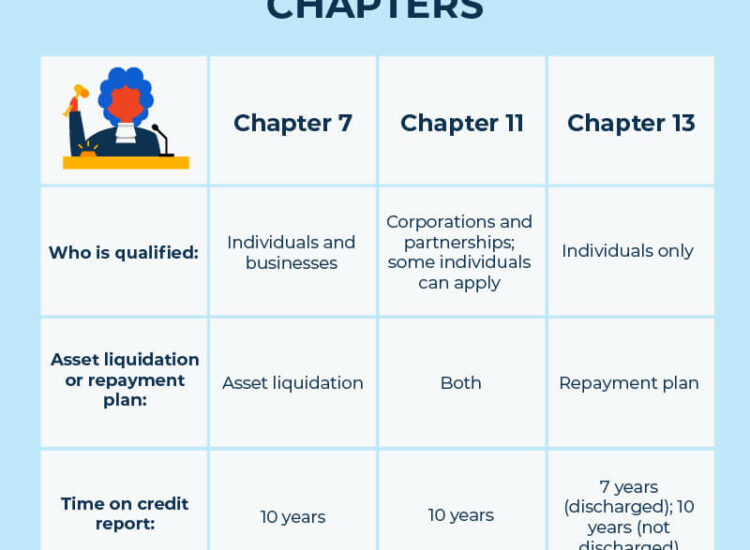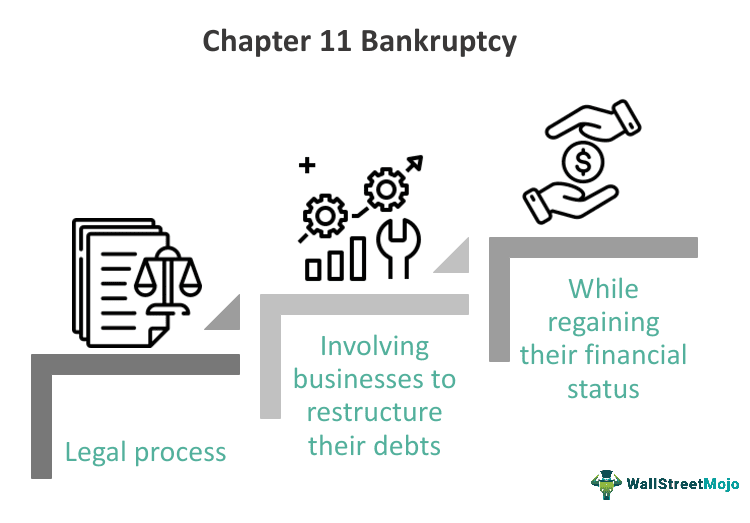In the dynamic landscape of modern technology, Cloud Computing has become the bedrock of digital innovation for businesses globally. Among the foremost pioneers and undisputed leaders in this space stands Amazon Web Services (AWS). Launched in 2006, AWS Cloud Computing transformed the IT industry by offering computing infrastructure and Cloud Services as a utility, accessible over the internet on an on-demand basis. What started with a few fundamental services has blossomed into the world’s most comprehensive and broadly adopted cloud platform, providing millions of customers—from the largest enterprises and leading government agencies to start-ups and individual developers—with a massive array of capabilities. AWS Cloud empowers organizations to become more agile, reduce costs, and scale their operations with unprecedented ease. Understanding AWS Cloud Computing is essential for anyone involved in IT today, as it defines much of the modern cloud paradigm. This in-depth article will explore the origins and evolution of AWS Cloud, delve into the foundational elements of its global AWS Infrastructure, highlight the significant AWS benefits it delivers, showcase the breadth and depth of its AWS Services portfolio, and discuss key considerations for organizations looking to leverage the power of AWS Cloud for their digital transformation journey. The impact of AWS Cloud Computing is felt across the globe, shaping how technology is built and deployed, including in markets like Vietnam, where the term is becoming increasingly familiar as businesses embrace cloud technology.
Toc
Exploring AWS Cloud Computing: The World’s Leading Cloud Platform

AWS Cloud Computing stands as the most mature and extensive cloud platform available today. Its leadership is rooted in its early entry into the market, relentless pace of innovation, and deep understanding of delivering reliable, scalable, and secure Cloud Services. Exploring AWS Cloud is essentially exploring the evolution and best practices of Cloud Computing itself.
The Genesis and Evolution of Amazon Web Services (AWS Cloud)
The story of AWS Cloud Computing begins in the early 2000s within Amazon.com. Recognizing the efficiency gains from their own internal infrastructure improvements, Amazon leadership saw an opportunity to offer these capabilities as external services. The first public AWS Services were launched in 2006, starting with fundamental building blocks like Amazon S3 (Simple Storage Service) for object storage and Amazon EC2 (Elastic Compute Cloud) for virtual servers. These initial offerings marked a pivotal moment, providing developers and businesses access to scalable, reliable Cloud Infrastructure without the need for massive upfront investments.
This utility model for computing resources resonated strongly with the market. Over the subsequent years, AWS Cloud expanded its portfolio at an astonishing pace, introducing services for databases, networking, analytics, developer tools, security, and much more. This rapid innovation allowed AWS Cloud Computing to stay ahead of the curve, continuously adding new capabilities and refining existing ones based on customer feedback and emerging technology trends. This evolution wasn’t just about adding services; it was also about building a robust global AWS Infrastructure comprised of multiple geographic regions, each with multiple Availability Zones, designed for high availability and fault tolerance. Today, Amazon Web Services offers over 200 fully featured services, maintaining its position as the world’s leading cloud provider by market share and the breadth of its offerings. The term encapsulates this powerful suite of services delivered by Amazon.
Understanding the Foundational Pillars of AWS Infrastructure

The reliability, scalability, and performance of AWS Cloud Computing are built upon a massive and sophisticated global AWS Infrastructure. This infrastructure is a key differentiator and enables the delivery of all AWS Services to customers worldwide.
The core of AWS Infrastructure is its network of Regions and Availability Zones. An AWS Region is a physical location in the world where Amazon has multiple data centers. These regions are geographically separate from each other to ensure redundancy and fault tolerance. Each Region consists of multiple Availability Zones (AZs), which are distinct physical data centers within a Region. AZs are located tens of miles apart from each other within a single Region to be isolated from common risks (like fire, flood, or power outage) but close enough to have low-latency network connections between them. This design allows customers to deploy their applications across multiple AZs within a Region to achieve high availability and automatically failover if one data center becomes unavailable.
Beyond Regions and AZs, AWS Infrastructure includes Edge Locations, which are data centers designed to deliver Cloud Services that require lower latency, such as content delivery (Amazon CloudFront) or DNS (Amazon Route 53). These Edge Locations are spread across many more cities globally than Regions, bringing AWS Cloud services closer to end-users. The sheer scale and thoughtful design of this global AWS Infrastructure provide the underlying power and reliability that customers expect from AWS Cloud Computing. This massive physical layer, abstracted and delivered as Cloud Services, is fundamental to the AWS benefits realized by users.
Key AWS Benefits Driving Global Adoption

The widespread adoption of AWS Cloud Computing is driven by a compelling set of AWS benefits that address the challenges and limitations of traditional IT infrastructure.
2. https://tamtho.com.vn/mmoga-facing-overwhelming-debt-why-you-need-a-lawyer-for-bankruptcies/
3. https://tamtho.com.vn/mmoga-defining-what-is-chapter-11-bankruptcies-the-path-to-reorganization/
4. https://tamtho.com.vn/mmoga-understanding-the-landscape-what-are-the-3-types-of-bankruptcies/
- Cost Savings: AWS Cloud operates on a pay-as-you-go model with no long-term contracts required (for most services). This eliminates the need for large upfront capital expenditures on hardware and data centers. Customers only pay for the computing resources they actually consume, which can lead to significant cost savings, especially for variable workloads. AWS pricing is designed to be competitive and transparent.
- Scalability and Elasticity: AWS Cloud Computing allows organizations to easily scale their IT resources up or down based on demand, often automatically. This means they can handle sudden spikes in traffic or workload requirements without provisioning excess capacity that sits idle during normal periods. This agility is a major AWS benefit for businesses facing fluctuating demand.
- Reliability and Performance: Thanks to its global AWS Infrastructure with Regions and Availability Zones, AWS Cloud is designed for high availability and fault tolerance. AWS Services are engineered to provide reliable performance, ensuring applications run smoothly and consistently.
- Security: AWS Cloud security is a top priority. AWS provides a secure and durable global infrastructure and offers a wide range of Cloud Services designed to help customers meet their own security and compliance objectives. While security in the cloud is a shared responsibility (customers are responsible for securing their data and configurations), AWS is responsible for security of the cloud (protecting the underlying AWS Infrastructure).
- Breadth and Depth of Services: AWS Cloud offers the broadest and deepest portfolio of Cloud Services compared to other providers. This allows customers to access virtually any type of IT resource they need, from compute and storage to machine learning, artificial intelligence, Internet of Things (IoT), and quantum computing, all within the AWS Cloud ecosystem.
- Speed of Innovation: AWS continuously launches new AWS Services and features at a rapid pace, giving customers access to the latest technologies without significant R&D investment themselves. This allows organizations to innovate faster and stay ahead of the competition.
These powerful AWS benefits make AWS Cloud Computing a strategic choice for organizations aiming to accelerate innovation, optimize costs, and build resilient and scalable applications in the cloud.
Diving Deep into AWS Services: A Comprehensive Portfolio for Every Need
One of the defining characteristics of AWS Cloud Computing is the sheer volume and variety of AWS Services available. This extensive portfolio caters to virtually every conceivable IT need, allowing customers to build complex solutions entirely within the AWS Cloud ecosystem. Understanding these different categories of AWS Services provides deeper insight into the capabilities of AWS Cloud Computing.
AWS Compute Services: Powering Applications of All Shapes and Sizes
Compute services form the core of any cloud platform, providing the processing power needed to run applications. AWS Cloud Computing offers a diverse range of AWS Compute Services to meet different requirements, from traditional virtual servers to serverless functions and container orchestration.
The most fundamental service is Amazon Elastic Compute Cloud (EC2), which provides resizable compute capacity in the cloud. Customers can launch virtual servers (instances) with various configurations (CPU, memory, storage, networking) tailored to their specific workload needs. AWS Cloud also offers bare metal instances through EC2 for workloads requiring direct access to the underlying hardware.
For containerized applications, AWS provides services like Amazon Elastic Container Service (ECS) and Amazon Elastic Kubernetes Service (EKS), making it easy to deploy, manage, and scale containerized applications using Docker and Kubernetes.
Revolutionizing how developers deploy code, AWS Lambda is a serverless compute service that lets customers run code without provisioning or managing servers. Users only pay for the compute time consumed. This is a key service for building microservices and event-driven applications on AWS Cloud. Other AWS Compute Services include AWS Fargate (serverless for containers), AWS Batch (batch computing), and VMware Cloud on AWS (running VMware environments on AWS Infrastructure). This breadth of compute options allows organizations to choose the most appropriate and cost-effective solution for their applications on AWS Cloud Computing.
AWS Storage and Database Solutions: Managing Data at Scale

Data is at the heart of every modern application, and AWS Cloud Computing provides robust and scalable AWS Storage and database AWS Services to manage data of all types and scales.
Amazon Simple Storage Service (S3) is a highly durable, scalable, and secure object storage service. It’s commonly used for data lakes, backups, archiving, and hosting static websites. For block-level storage attached to EC2 instances, Amazon Elastic Block Store (EBS) provides high-performance storage volumes. Amazon Elastic File System (EFS) offers scalable file storage for use with EC2 instances. For long-term archival, Amazon S3 Glacier provides extremely low-cost storage classes.
In the database realm, AWS Cloud offers a wide array of managed database AWS Services to simplify database administration. Amazon Relational Database Service (RDS) supports several popular relational database engines (like PostgreSQL, MySQL, MariaDB, Oracle, SQL Server, and Amazon Aurora – a high-performance AWS-proprietary database). Amazon DynamoDB is a fast, flexible NoSQL database service for single-digit millisecond performance at any scale. Other database services include Amazon Redshift (data warehousing), Amazon ElastiCache (in-memory caching), and Amazon Neptune (graph database). The variety of AWS Storage and database options ensures that AWS Cloud Computing can support the data requirements of virtually any application or AWS solution.
Networking, Security, and Management AWS Services: Connecting and Protecting Your Cloud Environment
Beyond compute, storage, and databases, AWS Cloud Computing offers a vast ecosystem of AWS Services for networking, security, management, and more, essential for building complete and secure cloud solutions.
AWS Networking Services are fundamental for connecting resources and users. Amazon Virtual Private Cloud (VPC) allows customers to provision a logically isolated section of the AWS Cloud where they can launch AWS resources in a virtual network 1 they define. Amazon Route 53 is a highly available and scalable cloud Domain Name System (DNS) web service. AWS Direct Connect provides a dedicated network connection from on-premises infrastructure to AWS Cloud, bypassing the public internet. Elastic Load Balancing (ELB) automatically distributes incoming application traffic across multiple targets, like EC2 instances.
2. https://tamtho.com.vn/mmoga-facing-overwhelming-debt-why-you-need-a-lawyer-for-bankruptcies/
3. https://tamtho.com.vn/mmoga-understanding-the-landscape-what-are-the-3-types-of-bankruptcies/
AWS Security is woven throughout the platform. AWS Identity and Access Management (IAM) enables customers to securely control access to AWS Cloud resources. AWS Shield and AWS WAF provide protection against DDoS attacks and common web exploits. Services like AWS Key Management Service (KMS) help manage encryption keys. AWS CloudTrail and Amazon CloudWatch provide logging and monitoring capabilities essential for security auditing and operational visibility. These AWS Security services, combined with AWS’s robust AWS Infrastructure, help organizations build and maintain a strong security posture on AWS Cloud Computing.
Management and governance AWS Services include AWS CloudFormation (Infrastructure as Code), AWS Systems Manager (operational insights and management), and AWS Config (resource inventory and compliance). The extensive collection of these supporting AWS Services allows organizations to build, deploy, manage, and secure complex applications and workloads effectively on AWS Cloud.
Building, Migrating, and Excelling with AWS Cloud Computing
Leveraging AWS Cloud Computing effectively involves strategic planning for migration, a clear understanding of the shared security model, and proactive management of costs and professional development.
Strategies for AWS Migration and Modernization
Organizations looking to move existing applications and data to AWS Cloud can adopt various AWS migration strategies, often referred to as the “6 Rs”: Rehosting (lift-and-shift), Replatforming, Refactoring/Re-architecting, Repurchasing, Retiring, and Retaining. The choice of strategy depends on the application’s complexity, business criticality, cost considerations, and the desired level of cloud-native optimization.
AWS provides a suite of AWS migration tools and services to assist customers at every stage of their migration journey. The AWS Migration Hub provides a single location to track migration progress across multiple tools. AWS Server Migration Service (SMS) and AWS Database Migration Service (DMS) simplify the process of migrating servers and databases, respectively. AWS Application Discovery Service helps identify on-premises applications and dependencies to aid in planning. For large-scale migrations, programs like the AWS Migration Acceleration Program (MAP) provide methodology and incentives. Whether performing a straightforward lift-and-shift or re-architecting applications for cloud-native benefits, AWS Cloud offers the tools and support necessary for a successful AWS migration.
AWS Security: A Shared Responsibility Model and Robust Controls
AWS Security is a critical aspect of AWS Cloud Computing and operates under a Shared Responsibility Model. AWS is responsible for the security of the cloud, meaning they protect the global AWS Infrastructure that runs all the AWS Services. This includes the physical facilities, networking, hardware, and software infrastructure.
The customer, however, is responsible for the security in the cloud. This means customers are responsible for securing their data, applications, operating systems (for services like EC2), network configurations (like VPC security groups and network ACLs), identity and access management (IAM), and ensuring compliance with relevant regulations. AWS Cloud provides a vast array of AWS Security services (like IAM, VPC security features, KMS, GuardDuty, Security Hub) and best practices to help customers fulfill their responsibilities in the cloud. Understanding this distinction is fundamental for implementing effective AWS Security on AWS Cloud Computing. Leveraging AWS Security services and following best practices is crucial for protecting sensitive data and ensuring compliance.
Managing AWS Pricing and Advancing Your Career with AWS Certifications
Managing costs and investing in skills are key to maximizing the return on investment in AWS Cloud Computing. AWS pricing models are designed to be flexible and pay-as-you-go for most services, offering significant cost advantages over traditional IT. However, with the vast number of AWS Services, understanding and optimizing costs can be complex. AWS provides tools like the AWS Cost Explorer, AWS Budgets, and AWS Advisor to help customers monitor spending, identify areas for optimization, and forecast future costs. Strategies like rightsizing instances, leveraging reserved instances or savings plans for predictable workloads, utilizing lower-cost storage tiers (like S3 Standard-IA or Glacier), and automating resource lifecycle management are crucial for managing AWS pricing effectively.
For individuals looking to excel in AWS Cloud Computing, professional development and skill validation are key. AWS certifications are industry-recognized credentials that validate expertise in the AWS Cloud. These certifications cover various roles and technical areas, from foundational knowledge to associate, professional, and specialty levels. Obtaining AWS certifications is highly valuable for AWS Engineer and AWS Architect roles, demonstrating specific cloud computing skills and knowledge of AWS Services. Examples include the AWS Certified Solutions Architect, AWS Certified SysOps Administrator, AWS Certified Developer (all at the Associate level), progressing to Professional levels, and specialty certifications in areas like Security, Networking, and Machine Learning. Investing in AWS certifications is a vital step on the career path for anyone involved in AWS Cloud.
In conclusion, AWS Cloud Computing, powered by its extensive global AWS Infrastructure and over 200 comprehensive AWS Services, is the leading platform for Cloud Computing today. Its early market entry and relentless innovation have solidified its position, offering unparalleled AWS benefits in terms of scalability, flexibility, reliability, security, and cost-effectiveness. From fundamental AWS Compute Services and AWS Storage to advanced AI/ML capabilities and comprehensive AWS Security and management tools, AWS Cloud provides the capabilities needed for organizations of all sizes to build, deploy, and manage virtually any application or AWS solution. Successfully navigating AWS Cloud Computing involves understanding AWS migration strategies, embracing the shared responsibility model for AWS Security, managing AWS pricing proactively, and investing in skills validated by AWS certifications for roles like AWS Engineer and AWS Architect. As the digital world continues to evolve, AWS Cloud Computing will remain a central force, empowering innovation and shaping the future of technology globally, including the burgeoning landscape of.














